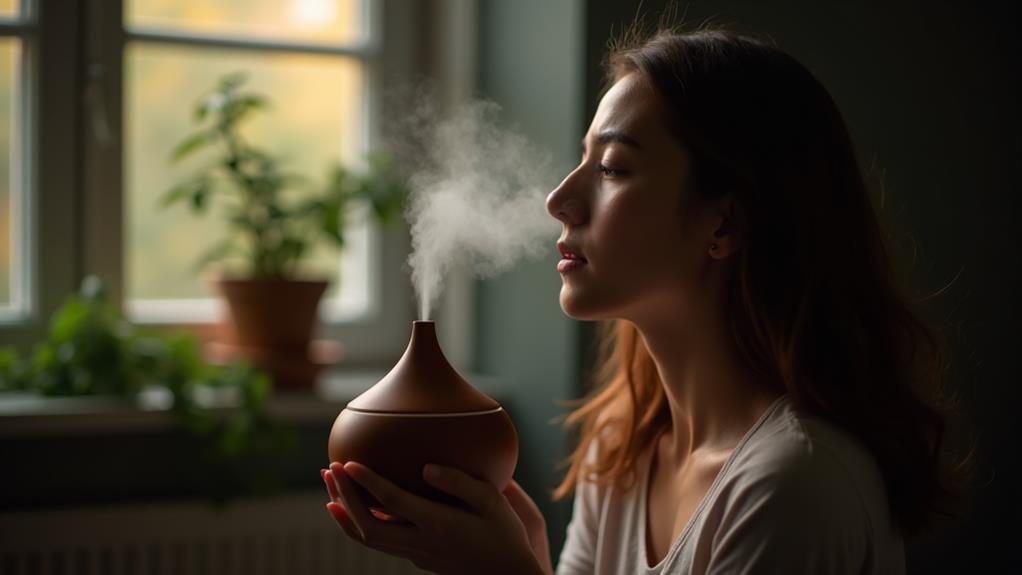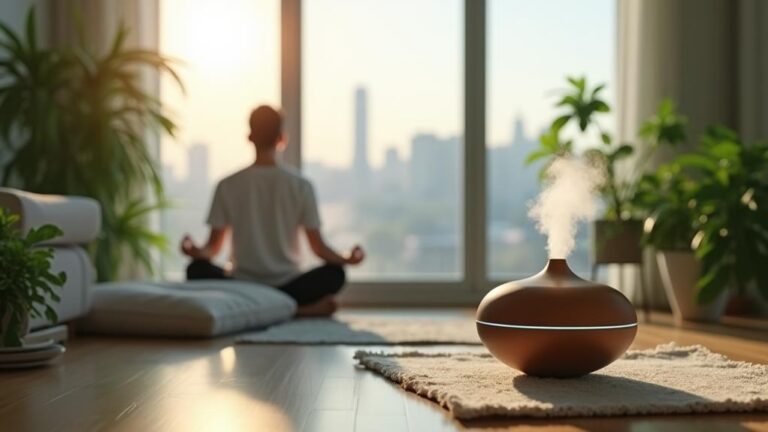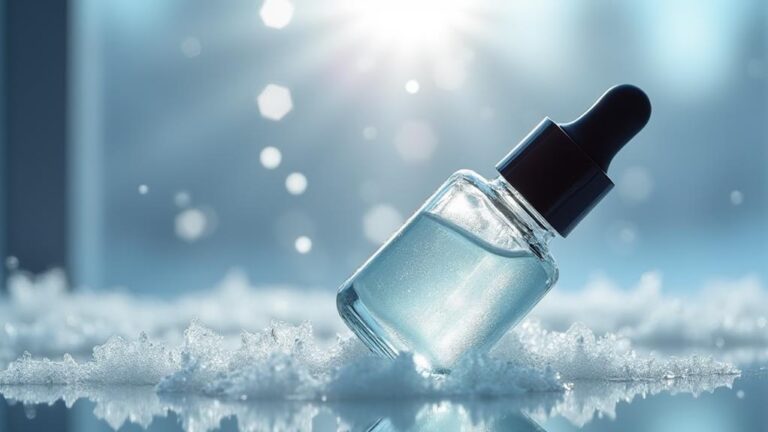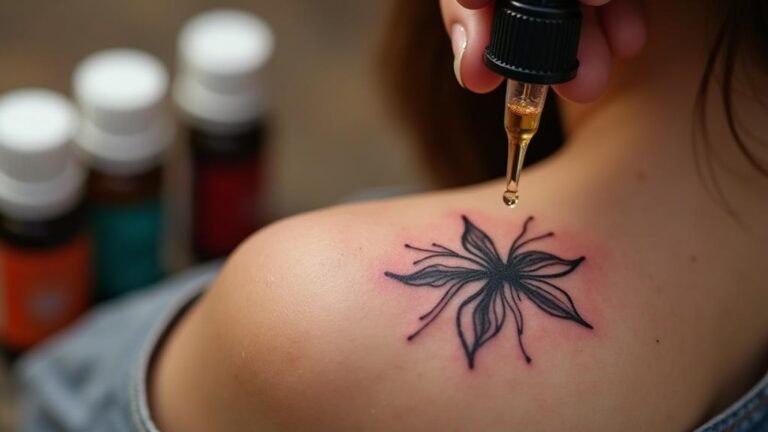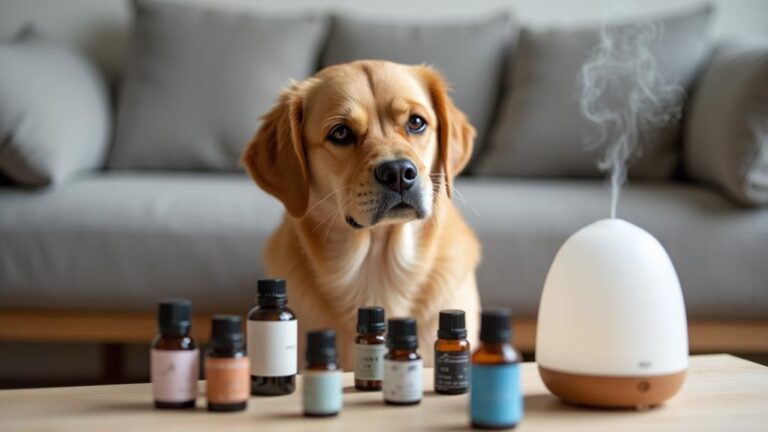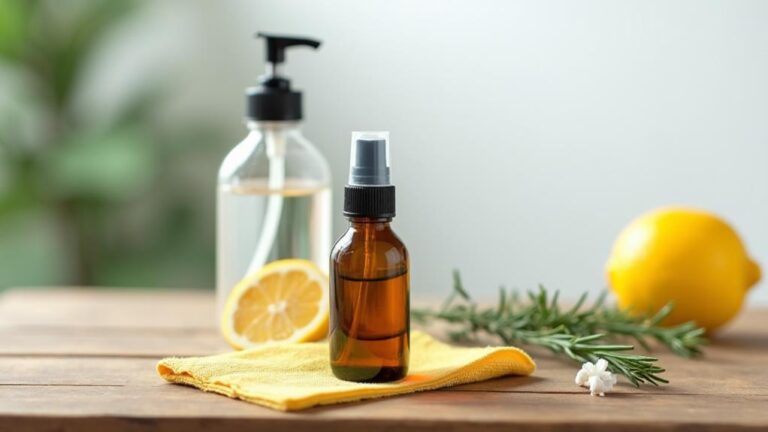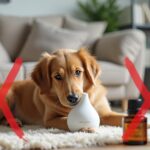Imagine using a few drops of peppermint essential oil to alleviate stress, only to experience skin irritation and a severe allergic reaction. This scenario is all too common, especially when handling essential oils without proper knowledge. If you're using essential oils in your daily routine, vital knowledge is necessary to understand the potential risks involved. Without proper handling, storage, and usage, these oils can cause more harm than good. As you explore the world of essential oils, paramount importance lies in knowing what to look out for and how to minimize risks – but where do you start?
Key Takeaways
- Always perform a patch test before using a new essential oil to identify potential allergic reactions or skin irritation.
- Use carrier oils to dilute essential oils, reducing the risk of skin irritation and promoting safe skin penetration.
- Store essential oils in dark glass containers in a cool, dry location, away from heat sources and out of reach of children and pets.
- Be aware of essential oil interactions with medications, such as statins, diabetes medications, and blood thinners, to prevent adverse effects.
- Research essential oils before use, read reviews, and check labels for warnings, cautions, or certifications to ensure safe use.
Essential Oil Safety Guidelines
When using essential oils, it's pivotal to follow safety guidelines to minimize risks and guarantee their therapeutic benefits.
Essential oil regulations vary by country, but most nations agree on some basic safety protocols. You should always dilute essential oils with a carrier oil before applying them to the skin, as undiluted oils can cause irritation or allergic reactions.
It's also paramount to follow the recommended usage rates for each oil.
Oil quality control is another critical aspect of essential oil safety. Look for oils that have been tested for purity and potency.
Check the label for third-party certifications, such as GC/MS testing, which verifies the oil meets certain standards. You should also be aware of the potential interactions between essential oils and medications, as well as any underlying health conditions that may be affected by oil use.
Choosing the Right Oils
In selecting essential oils for therapeutic use, it's crucial to ponder their individual properties and characteristics.
Each essential oil has a unique chemical composition that can profoundly impact its therapeutic effects and potential risks.
When choosing essential oils, you must carefully evaluate oil labeling, looking for information on the oil's botanical name, concentration, and country of origin.
Additionally, consider the supplier's reputation and expertise in essential oil production.
A reputable supplier will provide you with accurate and reliable information about the oil's properties, ensuring you make an informed decision.
Be wary of suppliers who make unsubstantiated claims or lack transparency about their sourcing and production processes.
You should also check for third-party certifications, such as GC/MS testing or ISO 9001 compliance, which can indicate a supplier's commitment to quality and safety.
By carefully evaluating oil labeling and supplier reputation, you can increase your confidence in the therapeutic value and safety of the essential oils you choose.
This will help you use essential oils effectively and minimize potential risks.
Proper Oil Handling Techniques
Having selected the right essential oils for your needs, you'll now want to guarantee that you handle them properly to maintain their potency, safety, and effectiveness.
Proper handling techniques are vital in preventing oil contamination, which can lead to the growth of bacteria, mold, or yeast in the oil.
These contaminants can cause adverse reactions, make the oil less potent, or even render it ineffective.
To prevent oil contamination, it's vital to sanitize the bottles and utensils you use to handle the oils.
Bottle sanitizing can be done by washing the bottles with soap and water, then rinsing them with a mixture of equal parts water and white vinegar.
You should also verify that your hands are clean and dry before handling the oils.
When pouring or measuring the oils, use a clean pipette or dropper to prevent contamination from your skin or other substances.
Store the oils in a cool, dark place, away from direct sunlight and heat sources, to maintain their quality and extend their shelf life.
Regularly inspect the oils for signs of contamination, such as an off smell or appearance.
Safe Application Methods
Essential oils can be applied to the skin in various ways, but it's crucial to do so safely to avoid adverse reactions.
When applying essential oils topically, you should dilute them with a carrier oil to reduce the risk of skin irritation and promote safe skin penetration. The recommended dilution ratio is typically 1-3% essential oil to 97-99% carrier oil.
This allows for controlled oil absorption and minimizes the risk of adverse reactions.
When choosing a carrier oil, consider its absorption rate and skin penetration properties.
Carrier oils like coconut oil and jojoba oil have a moderate absorption rate, making them suitable for most skin types.
However, if you have dry or sensitive skin, you may want to opt for a carrier oil with a slower absorption rate, such as sweet almond oil or avocado oil.
Always perform a patch test before applying a new essential oil blend to guarantee you don't have any sensitivities or allergies.
Essential Oil Allergy Signs
While using essential oils can be beneficial, they can also cause allergic reactions, which may manifest as skin irritation, respiratory issues, or even systemic responses.
If you're allergic to essential oils, you may experience symptoms such as itching, redness, or swelling after applying the oil or touching something that has come into contact with the oil, like oily fingers.
In severe cases, allergic reactions can lead to anaphylaxis, a life-threatening condition that requires immediate medical attention.
You may also experience respiratory issues, such as sneezing, congestion, or difficulty breathing, if you're allergic to essential oils.
This is often caused by inhaling the oil's particles or vapors.
Systemic responses, such as headaches, dizziness, or nausea, can also occur if your body reacts to the oil.
If you suspect you're having an allergic reaction to essential oils, discontinue use and wash the affected area with soap and water.
If symptoms persist or worsen, seek medical attention.
Crucial to identify the signs of allergic reactions to essential oils is to prevent serious health complications.
Skin Irritation Prevention
To minimize the risk of skin irritation when using essential oils, you can take several precautions.
One vital step is to perform skin patch testing before using a new essential oil. This involves applying a small amount of diluted essential oil to a discreet area of skin and waiting for 24-48 hours to see if any irritation occurs.
If you notice redness, itching, or swelling, it's best to avoid using that particular essential oil.
Several factors can contribute to skin irritation from essential oils, including the concentration of the oil, individual skin sensitivity, and the presence of certain chemical compounds.
Some essential oils, such as cinnamon, clove, and peppermint, are known to be more irritating than others.
When using essential oils, it's also important to dilute them with a carrier oil, as undiluted essential oils can cause severe skin irritation.
By taking these precautions and being aware of potential irritation factors, you can minimize the risk of skin irritation and enjoy the benefits of essential oils safely.
Always dilute essential oils and follow proper usage guidelines to protect your skin.
Safe Storage Practices
Properly storing essential oils is crucial to maintaining their quality and preventing accidents. You should use oil containers that are specifically designed for storing essential oils. These containers are typically made of dark glass, which protects the oils from light exposure and deterioration.
| Storage Practice | Description |
|---|---|
| Keep away from heat | Store essential oils in a cool, dry place to prevent deterioration. |
| Use dark glass containers | Protect essential oils from light exposure, which can cause them to break down. |
| Label containers clearly | Use labeling systems to identify the oil type, date, and any cautions. |
| Store in a secure location | Keep essential oils out of reach of children and pets. |
| Check expiration dates | Regularly check the expiration dates of your essential oils to confirm they are still safe to use. |
You should also use labeling systems to identify the oil type, date, and any cautions. This will help you to quickly identify the oil and use it safely. By following these storage practices, you can help to maintain the quality of your essential oils and prevent accidents.
Oil Interactions With Medications
When you use essential oils, it's vital to weigh their potential interactions with your medications.
Certain essential oils can react with medications, causing adverse effects or reducing their efficacy, and you should be aware of these risks.
Specifically, you'll want to understand how essential oils may interact with blood thinners and hormone therapy, as well as their potential to exacerbate other medication-related issues.
Medication Oil Reactions
While essential oils can be a valuable addition to your wellness routine, they can also interact with certain medications, potentially altering their effectiveness or increasing the risk of side effects.
When you use essential oils, it's vital to weigh oil interactions with medications you're taking. Some essential oils, such as grapefruit and bergamot, contain compounds that can interact with medications like statins, which lower cholesterol levels.
These interactions can lead to increased medication risks, such as elevated liver enzymes or decreased medication effectiveness. Similarly, essential oils like peppermint and ginger can interact with diabetes medications, potentially altering blood sugar levels.
To minimize the risk of adverse reactions, consult with your healthcare provider before using essential oils if you're taking medications. Provide them with a list of the essential oils you're using, including their concentrations and methods of application.
Your healthcare provider can help you assess potential oil interactions and medication risks, ensuring safe use of essential oils alongside your medications. Always follow proper usage guidelines and be aware of potential interactions to avoid adverse reactions.
Blood Thinner Interactions
Many essential oils can interact with blood thinners, such as warfarin, and increase the risk of bleeding. Warfarin, also known as Coumadin, is an anticoagulant medication prescribed to prevent blood clots.
When you use essential oils while taking warfarin, it can enhance the medication's effects, leading to increased bleeding risks. Certain essential oils, such as wintergreen, sweet birch, and pennyroyal, contain high levels of salicylates or coumarins, which can interact with warfarin.
If you're taking warfarin or other blood thinners, you should exercise caution when using essential oils.
Some oils, such as ginger and turmeric, may also increase the risk of bleeding when combined with warfarin. You must discuss your essential oil use with your healthcare provider, especially if you're taking medications like warfarin.
They can help you weigh the potential benefits and risks of using essential oils while on medication. To minimize warfarin risks and Coumadin dangers, consider alternative relaxation methods or consult with a healthcare professional before using essential oils.
Hormone Therapy Risks
Essential oil interactions with hormone therapy medications are a significant concern, as certain oils can alter the effects of these medications or even exacerbate underlying hormonal imbalances.
If you're undergoing hormone therapy, it's vital to be aware of the potential risks associated with essential oil use. Certain oils, such as clary sage, geranium, and fennel, may mimic or interfere with the body's natural hormones, leading to endocrine disruption.
This can result in a range of issues, from mild symptoms like mood swings and fatigue to more severe problems like hormone imbalances and thyroid dysfunction.
When using essential oils, you should be cautious about potential interactions with hormone replacement therapy (HRT) medications.
For example, estrogen-based HRT may be affected by oils that have estrogenic properties, such as lavender and tea tree oil. Similarly, oils that have androgenic properties, like rosemary and thyme, may interact with testosterone-based HRT.
To minimize the risk of endocrine disruption and hormone imbalance, consult with your healthcare provider before using essential oils, especially if you're undergoing hormone therapy. They can help you weigh the benefits and risks and recommend safe alternatives.
Essential Oil Dosage Limits
When using essential oils, it's vital to follow safe usage guidelines to minimize potential side effects.
You'll need to understand standard dilution rates, which vary depending on the specific oil and method of application. Typically, essential oils are diluted in a carrier oil, with common ratios ranging from 1-3% essential oil to 97-99% carrier oil.
Safe Usage Guidelines
Using essential oils safely requires careful consideration of their potency and potential risks.
As you set out on using essential oils, it's vital to prioritize fundamental education and oil literacy. This means understanding the properties, benefits, and potential side effects of each oil.
Take the time to research the specific essential oil you're interested in using and familiarize yourself with its contraindications, interactions, and potential allergies.
When using essential oils, always follow the label instructions and start with a small amount to gauge your sensitivity.
Some essential oils can be skin irritants, so it's imperative to perform a patch test before using them topically.
Be cautious when using essential oils on children, pregnant women, or individuals with compromised immune systems.
Keep essential oils out of reach of children and pets to avoid accidental ingestion.
Store essential oils in a cool, dry place, away from direct sunlight and heat sources.
By being informed and responsible in your use of essential oils, you can minimize the risks and maximize the benefits.
This fundamental education will help you navigate the world of essential oils safely and effectively.
Standard Dilution Rates
Establishing safe dilution rates is critical in harnessing the therapeutic benefits of essential oils while minimizing their potential risks.
When you use essential oils, diluting them with a carrier oil is vital to prevent skin irritation and other adverse reactions.
A general rule of thumb for essential dilution is to use 1-3% essential oil concentration, depending on the specific oil and your individual skin sensitivity.
For a 1% dilution, you'll need 5-7 drops of essential oil per teaspoon of carrier oil.
For a 2% dilution, use 10-14 drops per teaspoon of carrier oil.
Always check the recommended carrier ratio for the specific essential oil you're using, as some may require a lower or higher concentration.
It's also important to reflect on the area of application, as sensitive skin areas, like the face, may require a lower dilution rate.
By following these guidelines, you can enjoy the benefits of essential oils while minimizing the risks associated with their use.
Remember to always consult with a healthcare professional or certified aromatherapist if you're unsure about the safe use of essential oils.
Identifying Toxic Essential Oils
Many essential oils can be toxic if not used properly, and it's crucial that you identify these oils before incorporating them into your routine.
Some essential oils contain toxic compounds that can cause adverse reactions, such as skin irritation, allergic reactions, or even organ damage. For example, pennyroyal essential oil contains a toxic compound called pulegone, which can cause liver damage if ingested or used undiluted on the skin.
Essential impostors are also a concern.
Some essential oils are adulterated with synthetic chemicals or other essential oils that can increase their toxicity. For instance, some lavender essential oils may contain synthetic linalool or linalyl acetate, which can cause skin irritation or allergic reactions.
To avoid these risks, you should research the essential oil you want to use, read reviews, and check the label for any warnings or cautions. Look for essential oils that are certified organic, wildcrafted, or sustainably sourced, and always dilute them with a carrier oil before applying to the skin.
Frequently Asked Questions
Can I Use Essential Oils on My Pets?
When using essential oils on your pets, you're exploring pet aromatherapy, but remember that pets can be more sensitive to oils than humans due to their size and oil sensitivity.
How to Dispose of Expired Essential Oils?
You'll find expiration dates on essential oils, typically near the Oil Shelf life. Check these dates, then dispose of expired oils by sealing them in airtight bags and discarding in your regular trash.
Can I Mix Essential Oils With Food Recipes?
Like a master chef, you may wonder if essential oils can spice up your dishes as flavor enhancers. However, you must prioritize culinary safety; only use food-grade oils, and follow recommended dilution ratios to avoid adverse effects.
Are Essential Oils Safe for Pregnant Teenagers?
When you're pregnant as a teenager, you're probably concerned about essential oil safety. Certain essential oils pose pregnancy risks and hormone disruption, so you should consult your healthcare provider before using them during pregnancy.
Can I Use Essential Oils in Humidifiers?
Imagine a symphony of scents harmonizing in your humidifier. However, you must conduct with caution: check your humidifier's manual for essential oil compatibility and follow Humidifier Safety guidelines to avoid any discordant health effects.
Conclusion
By following essential oil safety guidelines, you'll navigate the world of aromatherapy with confidence. Your journey will be a fragrant path that weaves through a lush meadow of wellness, rather than a treacherous mountain of risks. With knowledge as your compass, you'll avoid the pitfalls of toxicity and interactions, ensuring a safe and harmonious blend of essential oils in your life. You'll breathe easy, knowing you're in control of your health.


